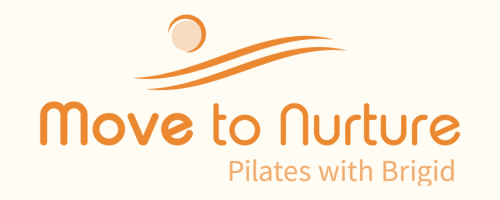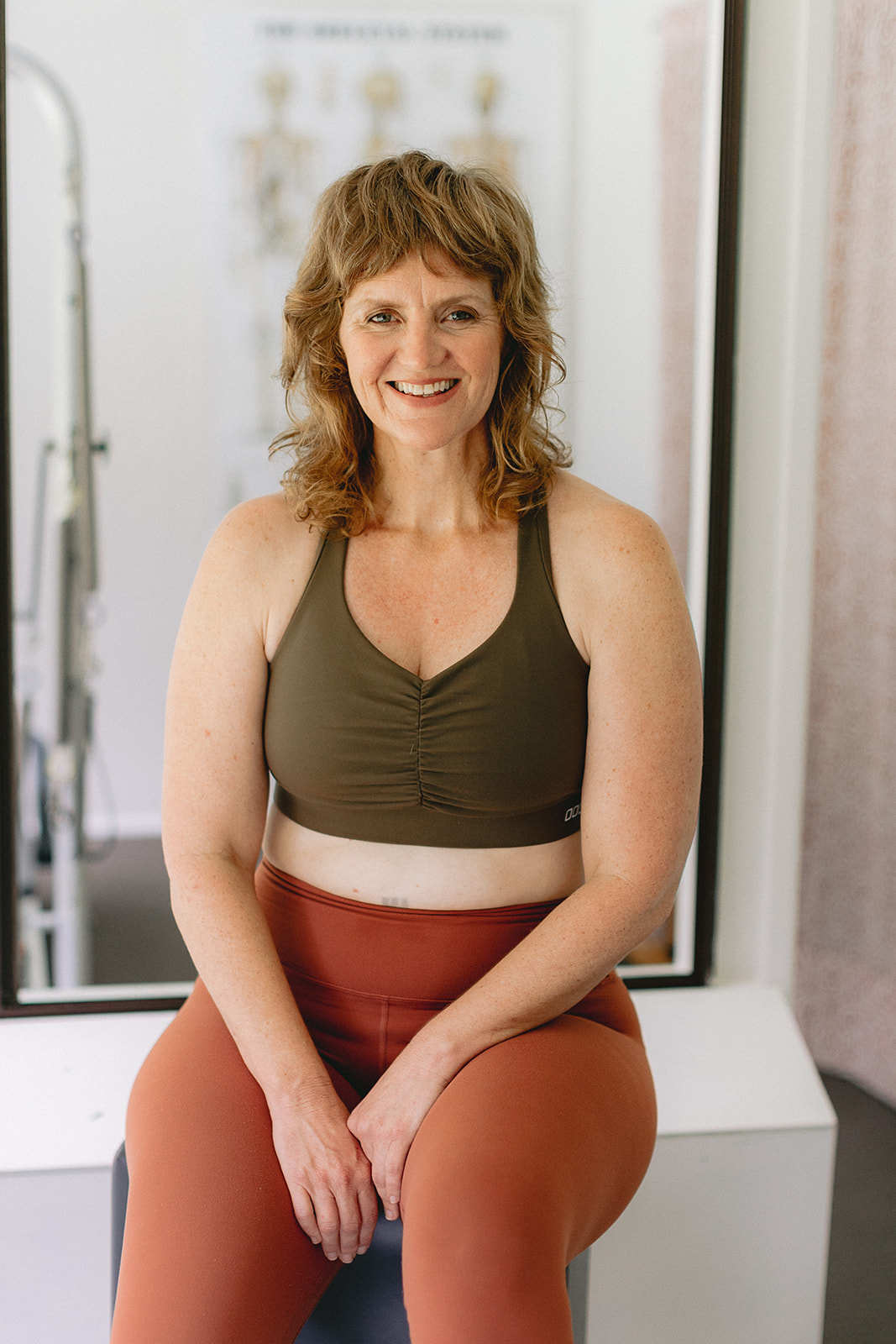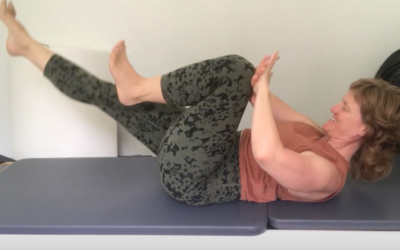As women move into their 40s and beyond, it’s common to notice changes in the body that can feel discouraging. One such change that many women experience is a flattening of the buttocks, often referred to as a “pancake bottom.” If you’ve found yourself frustrated by this issue, you’re not alone. At Move to Nurture Pilates, we’re committed to helping women over 40 build sustainable core strength without punishing themselves, and part of that work includes addressing why your glutes may not be as strong or functional as you’d like.
Contrary to popular belief, it’s not just about hitting the gym harder or doing more squats. Flattened glutes often stem from deeper, more subtle habits that affect posture and movement patterns. Understanding the underlying causes of a pancake bottom can not only help you get the function and strength you’re after but also support your overall well-being. In this blog, we’ll explore two of the main reasons why you might be struggling with a flat backside: butt gripping and standing posture. We’ll also cover what you can do to address these issues in a healthy, sustainable way.
1. Butt Gripping: What It Is and Why It Matters
One of the key reasons for a flat, weak bottom is a phenomenon known as butt gripping. Butt gripping happens when you unconsciously clench or grip your glute muscles during everyday activities, often as a response to instability or poor posture. While it might seem like gripping your glutes would help tone them, it actually has the opposite effect over time. Constantly holding tension in your glutes prevents them from functioning properly, leading to weakness and a loss of muscle tone.
When you butt grip, you create tightness in the glute muscles, but this tightness doesn’t translate to strength. Instead, the muscles become short and overactive in certain areas while remaining underused in others. This can create an imbalance that affects your entire body.
Effects of Butt Gripping:
- Feet: Butt gripping can throw off your entire alignment, starting with your feet. When you grip your glutes, you’re more likely to shift your weight forward into your toes, causing strain in the arches and toes. This can also lead to foot pain or issues like plantar fasciitis over time.
- Pelvic Floor Function: Butt gripping directly affects the pelvic floor. Your glutes and pelvic floor are closely linked, and when your glutes are constantly clenched, your pelvic floor muscles can become tight and overworked. This can lead to pelvic floor dysfunction, including problems with bladder control, stability, and even lower back pain.
- Posture: Butt gripping also has a negative impact on your posture. When you grip your glutes, you tend to tuck your pelvis under, which flattens the curve in your lower back. This posture leads to tension in your lower spine, a forward-tilting rib cage, and an overall lack of mobility in your trunk, which can make it difficult to engage your core properly.
2. Standing Posture: How Weight Distribution Affects Your Glutes
Another key reason for a pancake bottom is your standing posture, specifically where you carry your weight in your feet. Many people unknowingly stand with their weight too far forward on their toes, and this posture sets you up for butt gripping. When your weight is forward, your body tries to stabilize itself by clenching the glutes, causing that same chain reaction of tightness and imbalance.
Standing with your weight forward puts unnecessary strain on your knees and lower back, while also disengaging the glutes. Over time, this habit leads to underused, weakened glute muscles and a flattened appearance. If you’re constantly leaning forward or standing on your toes, your glutes never get the chance to function properly, resulting in that pancake effect.
Now that we’ve covered the root causes of a flat bottom, let’s look at what you can do to reverse the pattern and build healthy, strong glutes that not only look good but also support your entire body.
What to Do About It
1. Become Aware of Your Standing Posture
The first step to addressing your pancake bottom is to become aware of how you’re standing. Are you gripping your glutes? Is your pelvis tucked under or tilted forward? Take a few moments throughout the day to check in with your posture. Try to stand tall with your pelvis in a neutral position (not tucked or tilted) and your rib cage stacked over your hips. This awareness alone can help you break the habit of butt gripping.
2. Focus on Weight Distribution in Your Feet
Next, take a closer look at where your weight is falling through your feet. Are you leaning forward into your toes or standing too far back on your heels? Ideally, your weight should be evenly distributed across the entire foot, with a slight emphasis on the heels rather than the toes. Standing with your weight back in your heels will help you activate your glutes more effectively and avoid unnecessary tension in your feet, knees, and lower back.
3. Practice Relaxing the Gripping
Once you’ve identified if you’re butt gripping, work on relaxing those muscles. It might feel counterintuitive at first, but releasing the tension in your glutes allows them to function as they should. Practice consciously softening your glutes while standing or moving, especially during activities like walking, lifting, or standing in line. You can also try deep breathing exercises, as these help release tension throughout the body and reconnect you to your pelvic floor.
4. Lengthen Your Glutes Before Strengthening
Before diving into any glute-strengthening exercises, it’s important to lengthen your glutes. Tight, short muscles don’t contract efficiently, and trying to strengthen them before they’re properly lengthened will only reinforce bad habits. Gentle movements, like rock backs, can help release the tension in your glutes and prepare them for strength work.
5. Try Standing Strength Work with Attention to Pelvic Position
Once you’ve become aware of your posture, relaxed the gripping and worked on your glute length, you can begin to build strength in your glutes. The key here is to focus on your pelvic position throughout each exercise. Standing strength exercises like squats, lunges, and deadlifts are great for targeting the glutes, but they need to be done with mindful attention to alignment. Keep your pelvis neutral and make sure your ribs are not flaring forward or collapsing. Move slowly and deliberately, ensuring that your glutes are doing the work rather than overusing your thighs or lower back.
A Bottom That Supports Your Well-being
Your glutes are more than just a muscle group to sculpt in the gym; they play a crucial role in supporting your entire body, including your spine and sacrum. A strong, balanced backside helps you move through life with stability, ease, and confidence. By addressing underlying issues like butt gripping and poor posture, you can start to use your glutes in a way that supports your overall well-being.
Instead of focusing purely on aesthetics, prioritize a bottom that works for you by supporting the natural curves of your spine, providing a stable base for your core, and allowing you to move with freedom and grace. The journey to a stronger, more functional backside is about more than appearances—it’s about feeling empowered in your body, moving well, and enjoying life!





0 Comments